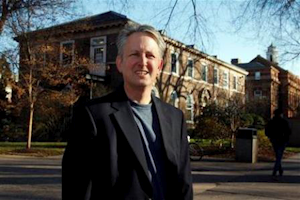ETS Explores the Link Between Poverty and Education
Bruce Baker, professor of educational theory, policy and administration at Rutgers, discusses isolation and segregation in education at ETS forum.
WASHINGTON — To change the life trajectory of children from families of lesser means, more attention must be given to their plight and crafting policies that increase their likelihood for academic success.
That was the heart of the message delivered Wednesday by the Educational Testing Service, or ETS, during a research forum titled “Poverty and Education: Finding the Way Forward.” The event featured the release of the report by the same name.
The report compiles previously publicized but perhaps not-so-well-known facts and figures that delineate the scope and depth of poverty in America. For instance, 22 percent of the nation’s children are in poverty, 20 million Americans have incomes of less than half of the poverty threshold, and about 1.5 million households with about 2.8 million children are classified as being in “extreme poverty,” that is, living on $2 or less of income per person per day in a given month.
Though the poverty threshold for a family of four is $23,550, according to the U.S. Department of Health and Human Services, the report notes that “large differences” exist in the income needed by families in various parts of the United States.
The report also contains recommendations of things that can be done to ensure better educational outcomes for children from poor families, such as improving the quality of the teacher workforce and reducing isolation
Does Where You Go to School Impact Your Opportunities?
Giovanna Robledo In a society of labels, brands, ranks and pedigrees, does having a particular institution’s name on your diploma bring more than just pride? While most agree that a quality education can be obtained at small, lesser-known universities, a well-connected institution can offer a gateway to a world of opportunities, among them, increased access, exposure and income. Paying for the mos
Report: Steady College Enrollment Growth for Underrepresented Minorities, College Completion Rates Increasing More Slowly
Students of all races are made to feel welcome at the University of North Carolina at Greensboro. (photo courtesy of UNC-G) Newly-released analysis of U.S. Education Department data shows that from 2009 to 2011, the rate at which Black and Latino students entered four-year colleges and universities considerably outpaced that of Whites, while six-year graduation rates for underrepresented minority

